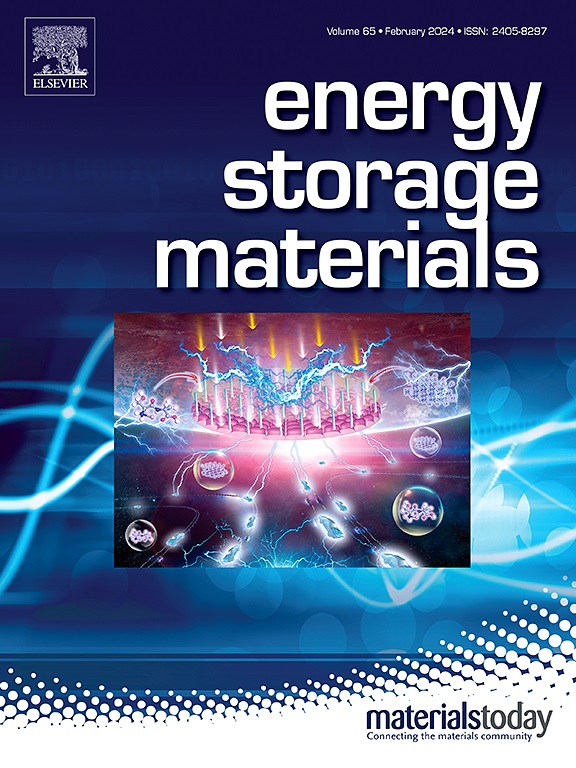Achieving excellent energy storage properties in lead-free ceramics via competing FE/AFE phase coexistence
IF 18.9
1区 材料科学
Q1 CHEMISTRY, PHYSICAL
引用次数: 0
Abstract
Dielectric capacitors are widely utilized in large-scale power systems, including applications in medical and military fields. However, their relatively low energy storage density limits further advancements in miniaturization and integration. Therefore, improving the energy storage density of dielectric capacitors is of paramount importance. In this work, novel lead-free Na0.70Sr0.15Nb0.75Ta0.25O3 (NSNT) ceramics were designed, which exhibit a unique combination of relaxor ferroelectric (FE) N phase and stabilized antiferroelectric (AFE) P phase, as confirmed through local structural analysis. The competing FE/AFE phase coexistence is attributed to the discrepancy in ion valence and radius. As a result, the NSNT ceramics demonstrate exceptional energy storage performance, featuring a recoverable energy density (Wrec) of 10.45 J/cm³ and an energy efficiency (η) of 83.0 % at 850 kV/cm, along with excellent stability. These outstanding energy storage properties not only confirm the promising application prospects of NN-based ceramics with competing FE/AFE phase coexistence, but also provide an innovative approach for advancing high-performance ceramic capacitors.
通过竞争FE/AFE相共存实现无铅陶瓷优异的储能性能
介质电容器广泛应用于大型电力系统,包括医疗和军事领域。然而,它们相对较低的能量存储密度限制了它们在小型化和集成化方面的进一步发展。因此,提高介质电容器的储能密度是至关重要的。本文设计了新型无铅Na0.70Sr0.15Nb0.75Ta0.25O3 (NSNT)陶瓷,通过局部结构分析证实,该陶瓷具有弛豫铁电(FE) N相和稳定反铁电(AFE) P相的独特组合。FE/AFE相共存的原因是离子价和半径的差异。结果表明,NSNT陶瓷具有优异的储能性能,在850 kV/cm时,可回收能量密度(Wrec)为10.45 J/cm³,能量效率(η)为83.0%,并且具有优异的稳定性。这些优异的储能性能不仅证实了FE/AFE相竞争共存的nn基陶瓷具有良好的应用前景,而且为推进高性能陶瓷电容器的发展提供了创新途径。
本文章由计算机程序翻译,如有差异,请以英文原文为准。
求助全文
约1分钟内获得全文
求助全文
来源期刊

Energy Storage Materials
Materials Science-General Materials Science
CiteScore
33.00
自引率
5.90%
发文量
652
审稿时长
27 days
期刊介绍:
Energy Storage Materials is a global interdisciplinary journal dedicated to sharing scientific and technological advancements in materials and devices for advanced energy storage and related energy conversion, such as in metal-O2 batteries. The journal features comprehensive research articles, including full papers and short communications, as well as authoritative feature articles and reviews by leading experts in the field.
Energy Storage Materials covers a wide range of topics, including the synthesis, fabrication, structure, properties, performance, and technological applications of energy storage materials. Additionally, the journal explores strategies, policies, and developments in the field of energy storage materials and devices for sustainable energy.
Published papers are selected based on their scientific and technological significance, their ability to provide valuable new knowledge, and their relevance to the international research community.
 求助内容:
求助内容: 应助结果提醒方式:
应助结果提醒方式:


